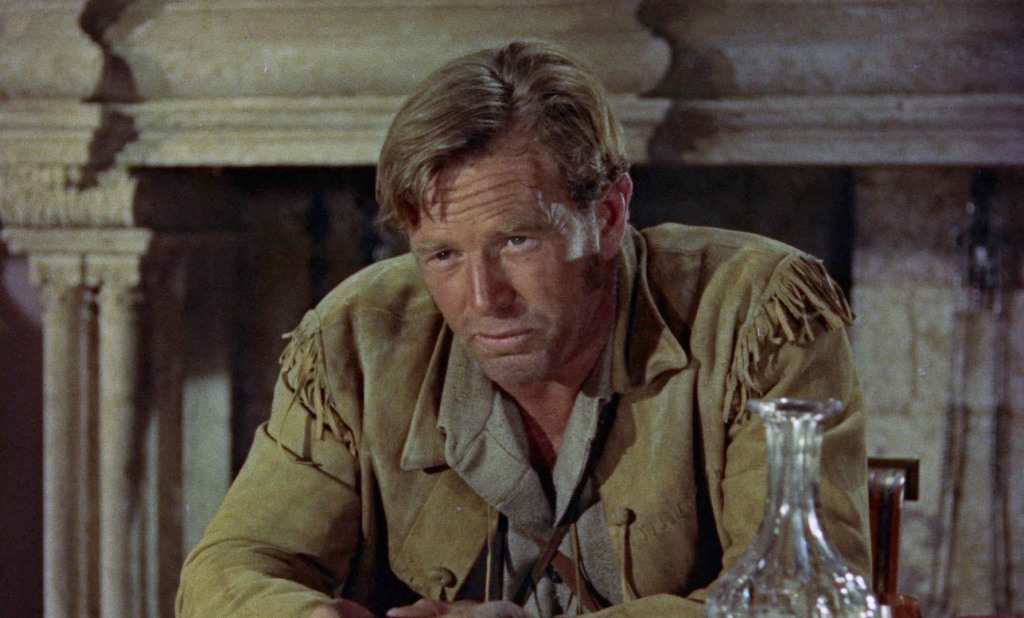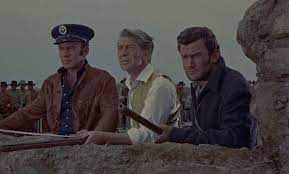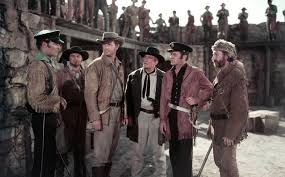🎬 The Last Command (1955)

The Last Command (1955) Review: A Stirring Tale of Sacrifice and Valor at the Alamo
Directed by Frank Lloyd, The Last Command is a sweeping historical drama that retells the story of the Battle of the Alamo, one of the most legendary episodes in American history. Starring Sterling Hayden as Jim Bowie and Richard Carlson as William Travis, the film weaves themes of heroism, conflict, and unity amid the turbulent backdrop of Texas’ fight for independence from Mexico. With its blend of historical drama and Hollywood spectacle, The Last Command captures the spirit of a pivotal moment in history while offering memorable performances and engaging storytelling.
Plot Overview: The Fight for Texas Independence
Set in 1836, the film recounts the events leading up to the infamous Battle of the Alamo, where a small group of Texan revolutionaries made a valiant stand against the vastly superior forces of General Santa Anna (J. Carroll Naish).
At the center of the story is Jim Bowie (Sterling Hayden), a rugged frontiersman and landowner who becomes a reluctant leader in the fight for Texas independence. Bowie’s personal journey intertwines with that of William Travis (Richard Carlson), a disciplined and principled commander, and Davy Crockett (Arthur Hunnicutt), the legendary frontiersman who joins the cause. Despite their differences, these leaders unite in a common struggle, culminating in a heroic last stand at the Alamo.
Sterling Hayden as Jim Bowie: A Rugged and Compelling Lead
Sterling Hayden delivers a commanding performance as Jim Bowie, portraying the character with grit, charisma, and emotional depth. Bowie’s internal conflict—torn between his loyalty to his Mexican wife’s family and his growing support for Texan independence—adds a layer of complexity to his character. Hayden’s towering presence and natural gravitas make Bowie a compelling figure, embodying the bravery and determination of the Alamo defenders.
Supporting Cast: A Strong Ensemble
- Richard Carlson as William Travis: Carlson’s portrayal of Travis brings a contrasting energy to the film. His character’s rigidity and idealism sometimes clash with Bowie’s pragmatism, creating a dynamic tension that drives much of the story.
- Arthur Hunnicutt as Davy Crockett: Hunnicutt shines as the legendary folk hero, infusing the role with warmth, humor, and down-to-earth wisdom. His portrayal adds a touch of humanity and levity to the otherwise somber narrative.
- J. Carroll Naish as General Santa Anna: Naish delivers a nuanced performance as the Mexican general, portraying him as a formidable yet restrained antagonist. While his motivations are not deeply explored, his presence looms large over the story.
Themes: Sacrifice, Unity, and Patriotism
At its core, The Last Command is a story of ordinary individuals rising to extraordinary challenges. The film delves into themes of sacrifice and unity, emphasizing the courage of the defenders who willingly faced overwhelming odds for the cause of freedom. It also explores the tension between personal loyalties and broader ideals, particularly through Bowie’s character, who must reconcile his ties to Mexico with his support for Texan independence.
Direction and Cinematography: A Visual and Emotional Spectacle
Frank Lloyd’s direction captures both the grandeur and intimacy of the Alamo’s story. Sweeping landscapes and meticulously designed sets immerse viewers in 19th-century Texas, while close-up shots highlight the emotional struggles of the characters.
The climactic battle sequences are a standout, blending thrilling action with a sense of tragic inevitability. Lloyd balances the historical scope of the narrative with personal moments that emphasize the humanity of the characters.
Music: A Stirring Score by Max Steiner
Max Steiner’s musical score is a significant asset to the film, underscoring the drama with stirring, patriotic themes. The music heightens the emotional impact of key scenes, particularly during the defenders’ final moments, and adds a sense of grandeur to the story.
Key Moments That Define The Last Command
- Bowie’s Dilemma: Bowie’s decision to side with the Texan revolutionaries despite his personal connections to Mexico sets the stage for his transformation into a heroic leader.
- The Tension Between Bowie and Travis: The ideological clashes between Bowie and Travis create compelling drama, ultimately giving way to mutual respect as they unite for the greater cause.
- The Final Stand: The climactic defense of the Alamo is both thrilling and poignant, showcasing the bravery and sacrifice of the defenders while highlighting the tragedy of their inevitable defeat.
Strengths of The Last Command
- Strong Performances: Sterling Hayden and Arthur Hunnicutt deliver memorable portrayals that anchor the film’s emotional core.
- Historical Scope: The film offers a detailed and engaging depiction of the events leading up to the Battle of the Alamo, providing context and depth.
- Emotional Resonance: Themes of sacrifice and unity resonate strongly, making the story impactful even for viewers unfamiliar with the history.
Weaknesses of The Last Command
- Simplified Villainy: While General Santa Anna is a key figure in the story, his character lacks depth, serving primarily as a symbol of opposition rather than a fully realized antagonist.
- Predictable Plot: The film’s adherence to historical events limits narrative surprises, though its execution keeps the story engaging.
- Occasional Melodrama: Some scenes lean into melodramatic territory, which may detract from the film’s otherwise grounded tone.
Legacy and Reception
The Last Command stands as one of the classic depictions of the Alamo’s story, celebrated for its attention to historical detail and its strong performances. While it may not have achieved the same cultural impact as other Alamo films, such as John Wayne’s The Alamo (1960), it remains a respected entry in the historical epic genre.
Accolades:
- The film was recognized for its production design and score, reflecting the care taken in crafting its historical atmosphere.

Fun Facts About The Last Command
- Historical Accuracy: While the film takes some liberties for dramatic effect, it strives to remain faithful to the key events and figures of the Alamo.
- Sterling Hayden’s Commitment: Hayden reportedly immersed himself in the role, embracing the rugged persona of Jim Bowie both on and off the set.
- Cultural Significance: The film contributed to a renewed interest in the Alamo’s history during the mid-20th century.
Conclusion: A Poignant Tribute to Heroism
The Last Command (1955) is a compelling historical drama that honors the legacy of the Alamo’s defenders with a blend of action, emotion, and historical authenticity. Anchored by strong performances from Sterling Hayden and Arthur Hunnicutt, the film captures the spirit of sacrifice and unity that defines this legendary moment in history. While it may not appeal to all modern audiences, its timeless themes and epic scope make it a must-watch for fans of historical cinema.